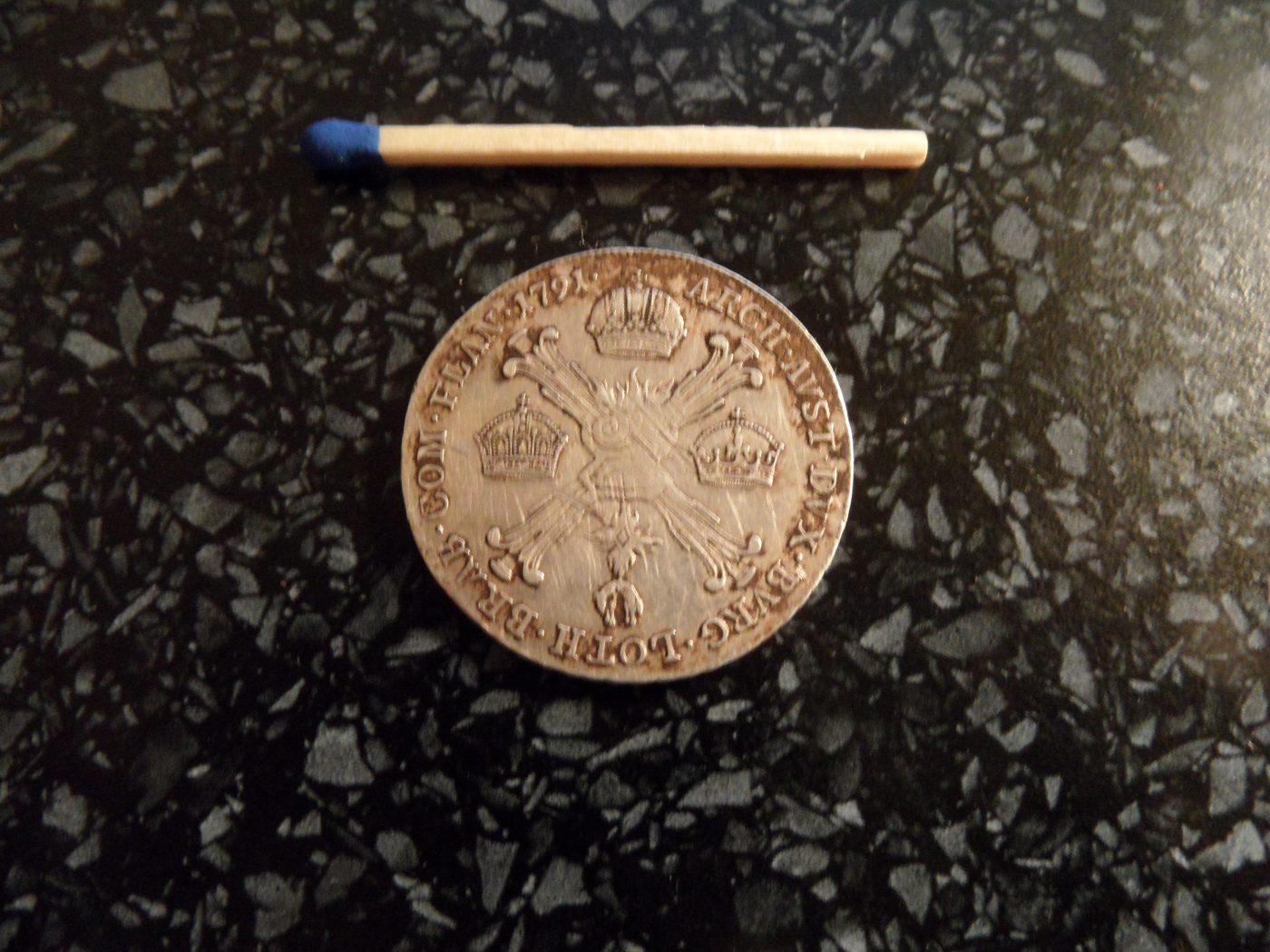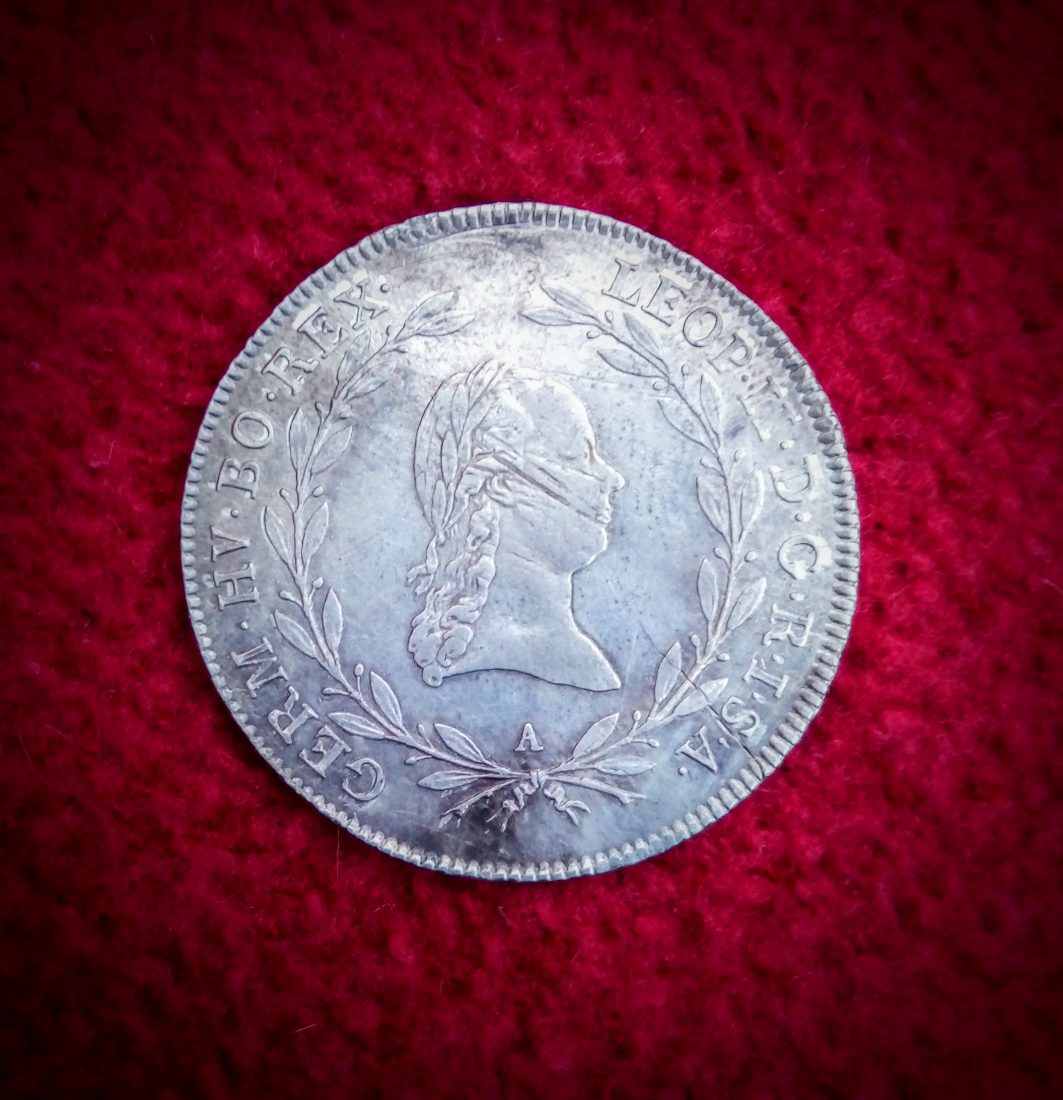Skvělá práce Ondro :)
Coinage of Leopold II.
Categories: Minting - Numismatics
Leopold II - A moderate pragmatist in the shadow of his brother
Leopold II.., Born Peter Leopold Josef Anton Joachim Pius Gotthard on 5 May 1747, he was the ninth child and third son of Empress Maria Theresa and her husband, Emperor Francis I. Stephen of Lorraine. As he was not originally expected to become emperor, he was destined for a career as a civil servant and was educated with a focus on theology.
In 1753 he was betrothed to Maria Beatrix of Estens, Princess of Modena. However, the marriage did not take place and Marie Beatrix was married to Leopold's younger brother Ferdinand Charles. After the untimely death of his older brother Charles Joseph in 1761, the family decided that Leopold would succeed his father as Grand Duke of Tuscany. On 5 August 1765, Leopold married Maria Luisa, daughter of King Charles III of Spain and Maria Amalia of Saxony.
On 18 August 1765, Francis Stephen of Lorraine dies and Leopold becomes the new Grand Duke of Tuscany. For his first five years in Tuscany, Leopold ruled under the supervision of advisors appointed by his mother. Over the next twenty years, he pushed through a series of reforms in his small state, such as the abolition of thethe abolition of the guilds and the reduction of tax rates (introduced under the Medici), the abolition of the Tuscan army and replacing it with a citizen militia, which in practice saved the Grand Duchy considerable financial resources, and the abolition of the death penalty along with the prohibition of torture (This was the first permanent prohibition in modern times!).
Leopold also introduced and promoted many socio-economic reforms. Smallpox vaccinations were systematically made available and an early institute for the rehabilitation of juvenile delinquents was established. Leopold also introduced radical reforms to the system that prevented neglect and inhumane treatment of the mentally ill.
During his reign in Tuscany, however, he also pushed for Enlightenment reforms that encroached on the power of the church, such as limiting the clericalreligious orders and increasing the state's influence over church affairs, which brought him into conflict with the Holy See. His stable, consistent and intelligent administration brought the grand duchy to a high level of material prosperity. Towards the end of his reign in Tuscany, Leopold began to feel anxious about the growing unrest in the family dominions in Germany and Hungary, which was a direct result of the rule of his brother Joseph. Although there was a certain emotional bond between the two brothers (although the relationship deteriorated considerably during Joseph's years of autocracy as a result of his radical tendencies) and they met frequently after their mother's death, Leopold did not listen tothe request of his dying brother, who in 1789 asked him to come to Vienna and become co-regent - he feared the impact of his brother's unpopularity on his own head. After Joseph's death on 20 February 1790, Leopold remained in Florence for some time, and did not commit to going to Vienna until 3 March.
On his arrival in Vienna, he began to work rapidly to calm the situation, which had been bleak during the last years of his brother's reign. He declared the states of the various countries to be the "pillars of the monarchy" and, to reassure the nobility, confirmed the abolition of the tax and the urban patent. At the same time, he endeared himself to the Church by returning the education of priests from the general seminaries to her hands. He ended the last Austro-Turkish war (confirmed by the Peace of Svishtov of 4. August 1791), thus also averting an imminent war with Prussia, which had been an ally of the Ottoman Sultanate since January 1790. He calmed the situation in Bohemia, and especially in Hungary, and, with the partial help of concessions, suppressed the rebellion in the Austrian Netherlands.
His coronation as Holy Roman Emperor took place on 9 October 1790 in Frankfurt am Main, the traditional venue for the coronation of Roman emperors. The coronation as King of Hungary followed on 11 November of the same year in Pressburg.
Leopold II gradually focused more and more attention on France, where a revolution was underway that personally affected his sister Marie Antoinette and threatened to spread to other countries. In August 1791 he issued a proclamation together with King Frederick William II of Prussia. The Declaration of Pilnitz, which led to the conclusion of the Treaty of Alliance between Prussia and the Habsburg monarchy in February 1792, aimed at countering revolutionary France.
From Vienna he had the crown jewels of St. Wenceslas transferred back to Prague and on 6 September 1791 he was crowned King of Bohemia in St. Vitus Cathedral. For this great event, the Czech estates commissioned the opera La Clemenza di Tito by Wolfgang Amadeus Mozart and several types of coronation medals were minted at the Vienna mint. The Emperor stayed in Prague for a few weeks during his coronation and took part, for example, in the first Czech industrial exhibition held in Klementinum.
The Emperor Leopold II died suddenly on 1. March 1792 in Vienna, probably from heart failure associated with the enormous pressure resulting from thepolitical events in Europe, shortly after he had stabilised the internal affairs and foreign relations of the empire. He is buried in the Tuscan Tomb, part of the Imperial Crypt under the Capuchin Church in Vienna.
Leopold II. left a legacy as an enlightened monarch who sought to reconcile modernizing reforms with a balance within the empire, and although his namename does not resonate as much today as his brother's, he is objectively one of the finest monarchs ever to sit on the Bohemian throne.
The coinage activity during the reign of Leopold II.
In the field of coinage, Leopold II continued the established practices of his predecessors within the framework of conventional currency. Due to the shortness of his reign, no major reforms of the monetary system took place. The coins minted during his reign followed the coinage of his brother Joseph II and bore the traditional iconography of the Habsburg monarchs. During his reign, mints were in operation in Vienna (A), Kremnica (B), Karlovy Vary (E), Halle (F), Velká Bani (G), Günzburg (H) and Milá(M), while small coins for the Austrian Netherlands were minted in Brussels (the coinage mark for Brussels was the head of a cherub until 1794). The Prague mint was closed and not in operation from 30 April 1784.
Conventional coinage for hereditary countries
Haler = 1/8 Krejcar (Cu) - minted in Günzburg between 1790 and 1792
½ Krejcar (Cu) - minted between 1791 and 1792 in Günzburg
Krejcar (Cu) - minted between 1791 and 1792 in Günzburg
III Krejcar (Ag) - for the West Austrians, minted in 1791 and 1792 in Günzburg
3 Krejcar (Ag) - minted in 1790 A; 1791 A, B and 1792 A, B, G
10 krejcar (Ag) - minted 1790 A; 1791 A, B and 1792 A, B, E
20 krejcar (Ag) - minted 1790 A; 1791 A, B, E, F, G, H and 1792 A, B, E, F, G, H
½ thaler (Ag) - minted in 1790 and 1792 in Vienna
½ tolar for Hungary (Ag) - minted in 1790, 1791 and 1792 in Vienna
Royal Tolar ( Ag) - minted in Vienna in 1790
Tolar "Royal" for the Hungarians (Ag) - minted in 1790 in Vienna
Tolar (Ag) - minted in 1790, 1791 and 1792 in Vienna
Tolar for the Hungarians (Ag) - minted in 1790 and 1791 in Vienna
Royal ducat ( Au) - minted in Vienna in 1790
Royal ducat for the Hungarians (Au) - minted in 1790 in Kremnica
Ducat (Au) - minted 1790 A; 1791 A, B, E, F, G and 1792 B, E, F, G
Ducat for the Hungarians (Au) - minted in 1791 and 1792 in Kremnica
2 ducat 1790 (Au) - only known mintmark from Vienna
4 ducat - minted in 1790 in Vienna
Minted for the Austrian Netherlands
Liard (Cu) - minted in 1791 and 1792 in Brussels
2 liard (Cu) - minted in 1791 and 1792 in Brussels
10 liard (Ag) - minted in 1791 and 1792 in Brussels
14 liards (Ag) - minted in 1790, 1791 and 1792 in Brussels
¼ cross thaler (Ag) - minted in 1790 A; 1791 A, B, H and 1792 A, B, H
½ thaler of the cross (Ag) - minted 1790 A; 1791 H, M and 1792 H
Cross Tolar (Ag) - minted 1790 A; 1791 H, M and 1792 H, M
¼ sovrano (Au) - minted in 1791 in Milan
½ sovrano (Au) - struck 1790 M; 1791 A, F, M and 1792 A, B, E, F, M
Sovrano (Au) - minted 1790 A, M; 1791 A, M and 1792 B, E, F, M
2 Sovrano 1791 (Au) - only known mintmark for Brussels
Copper coins for Gorizia and Gradiška
½ soldo (Cu) - minted 1790 F; 1791 A, F and 1792 F
Soldo (Cu) - minted 1790 F, H; 1791 A, F and 1792 F
Mint of Milan minted for Mantua
½ lira 1791 (Ag)
Lira 1791 (Ag)
Mintages for Milan
Lira (Ag) - minted in 1790 and 1791 at the local mint with the LB mark
Minted for Luxembourg
Sol 1790 H (Cu)
3 sol 1790 H (Ag)
6 sols 1790 H (Ag)
Treasure Hunter's Highlight - or the best of Leopold II found by a metal detector
- Hungarian ducat 1791 by yetan

- Cross ¼ thaler 1791 stahad

- 20 Krejcar 1790 from Vienna by Dejv76

- 3 krejcar 1792 Kremnica from user Pittbul

The article is included in categories:











